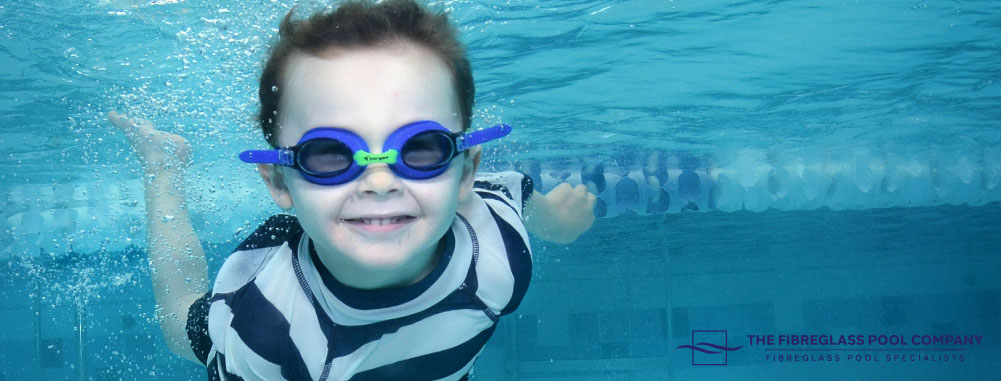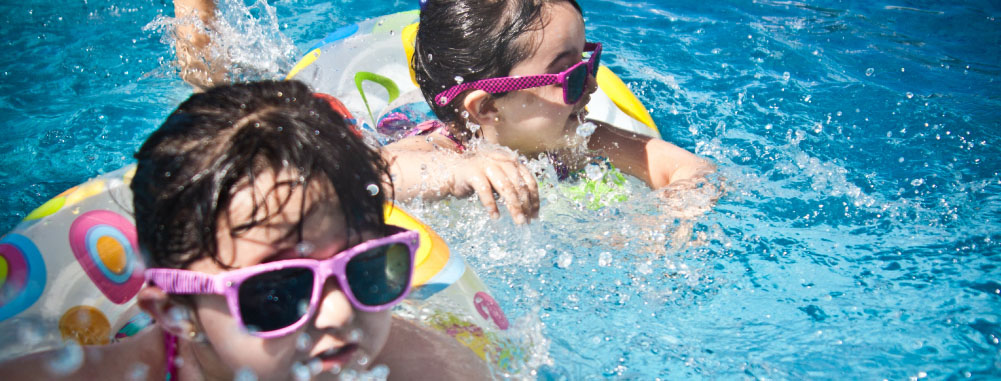Installing a swimming pool in the backyard is one of the best ways to make your home charming and beautiful. But maintaining the pool is important to keep it clean, sparkling, and healthy.

Maintaining the chemistry of the pool water and adding the required chemicals at regular intervals is one of the most crucial parts of keeping the pool clean. There are numerous chemicals, including chlorine, that pool owners use frequently to keep the pool clean and prevent the swimmers from catching any diseases.
Chlorine for cleaning fibreglass pools
Chlorine is the true powerhouse of pool upkeep. It is responsible for eliminating bacteria and sanitising the pool water. But this chemical should be used with utmost care while maintaining your fibreglass pools. When you are using chlorine in your pool, it is necessary to always maintain it at an optimal level of between 1 and 3 ppm. Any increase or decrease beyond this level can cause several issues for the pool and the swimmers using it.
Too much chlorine in your fibreglass pool can cause numerous issues.
It causes corrosion of pool equipment, metal piping, and other nearby structures.
It can cause damage to the fibreglass liners.
Exposure to too much chlorine can cause health issues like skin, eye, and lung irritation and asthma. It can also worsen existing diseases like psoriasis, dermatitis, and eczema.
The fibreglass pool’s surface can get damaged by chlorine pills like cal-hypo, dichlor, and trichlor. It is important to avoid letting these chlorine-based products come into direct contact with the floor and walls of the fibreglass swimming pool. These strong compounds can destroy the resin surface or gel coat and can lead to blistering and bleaching.
Here is a helpful guide on how to manage and maintain a saltwater fibreglass pool!
Cal-hypo and dichlor typically come in granule or powder form. If either of them is allowed to remain in contact with the surface of a fibreglass pool for a prolonged amount of time, the pool can get damaged. The ideal way to add these chemicals to the pool is to first mix them with an adequate amount of water. You can also spread them out using a brush if you do spot them floating on the pool surface.
The quantity of chlorine you can add to your pool should depend on your pool size and the chemical composition of the water at the time of chlorine addition. The strength and type of the chlorine compound will also play a role in deciding the amount of chlorine you should add to the pool. But while adding the chlorine, always make sure to keep the total chlorine concentration within the recommended levels.

Chemicals to avoid in fibreglass pools
Even though people use numerous chemicals to clean fibreglass pools, there are some compounds that you should avoid at all costs. These include:
Soda Ash - It can alter the pH levels of your pool and even make your pool water look cloudy.
Undiluted conditioners - It is better to keep undiluted conditioners out of the skimmer if possible. They contain cyanuric acid that can cause the conditioner to circumvent the pool. The pool could develop stains as a result of this. If you are particular about using this compound, always dilute it before pouring it into the pool.
Bleach - This is an extremely harsh chemical that can ruin the surface of fibreglass pools. It is always better to avoid bleach while cleaning the pool surface.
Alternative solutions to chlorine pools
Although chlorine is an important pool cleaning chemical, the prolonged use of the compound can lead to numerous health issues in humans and the gradual degradation of pool structures. There are some alternatives available that can be explored by health-conscious homeowners looking to find a respite from chlorine-filled swimming pools.
Keep on top of your swimming pool water with this handy guide!
Copper ionisation
This is one of the best alternatives to chlorine pools. A fibreglass pool without chlorine can be effectively treated with copper ionisation. The major advantage is the absence of lingering chemicals that could irritate the skin or eyes. It is an economically advantageous option to keep the pool water healthy.
The major components of this system include a copper electrode, a control unit, and test kits. Metallic ions are released during the ionisation process, which is then injected into the water by means of a low-voltage current. These copper ions, which are positively charged, are drawn to the negatively charged algae and bacteria and enter their cell walls. More of these ions are created as the pool water is circulated. A stabiliser is not necessary since sunlight has little effect on copper ions. The ionizers have a neutral pH, making pH maintenance simpler than with salt and chlorine systems. They can also be incorporated into existing chlorine pools with considerable ease.

Ultrafiltration
This method involves using a thin sieve to eliminate incredibly microscopic microorganisms, pieces of human skin, hair, and other debris after the initial filtering is complete. Only a bare minimum of chlorine is required in the pool. It effectively removes organic matter, bacteria, and other suspended contaminants. This system consists of filter tubes with extremely thin membranes through which low-pressure water is circulated in a loop. The thin, quasi-permeable pores in these membranes will allow some salts and necessary disinfectants to pass back into the pool. This is so water can be purified without the use of many chemicals. This method is a bit expensive.
U/V light
Chlorine and UV light can be used in conjunction with one another. Most bacteria in the swimming pool are killed by UV light, which also acts as a sanitiser, while chlorine preserves the residual effect. By using a U/V system, you can limit the amount of chlorine you add to the pool. It is also efficient at lowering chloramines. The size of the U/V light required is determined by the pool’s flow rate. Light of an appropriate size will easily destroy viruses and bacteria.
In Conclusion
Swimming pool cleaning and maintenance are crucial to keeping your fibreglass pool healthy and extending its lifespan. It is also important to carefully consider all your options before deciding on the cleaning mechanism for your pool. Having a pool that uses a limited amount of chemicals will not only make the swimming experience pleasant, but it will also prevent health issues for the swimmers.

